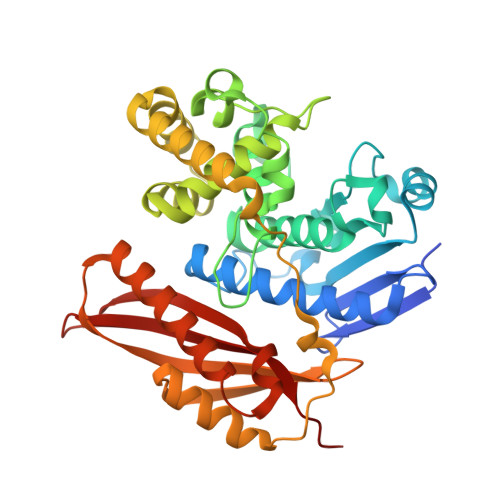Discovery of a Potent Inhibitor Class with High Selectivity toward Clostridial Collagenases.
Schonauer, E., Kany, A.M., Haupenthal, J., Husecken, K., Hoppe, I.J., Voos, K., Yahiaoui, S., Elsasser, B., Ducho, C., Brandstetter, H., Hartmann, R.W.(2017) J Am Chem Soc 139: 12696-12703
- PubMed: 28820255
- DOI: https://doi.org/10.1021/jacs.7b06935
- Primary Citation of Related Structures:
5O7E - PubMed Abstract:
Secreted virulence factors like bacterial collagenases are conceptually attractive targets for fighting microbial infections. However, previous attempts to develop potent compounds against these metalloproteases failed to achieve selectivity against human matrix metalloproteinases (MMPs). Using a surface plasmon resonance-based screening complemented with enzyme inhibition assays, we discovered an N-aryl mercaptoacetamide-based inhibitor scaffold that showed sub-micromolar affinities toward collagenase H (ColH) from the human pathogen Clostridium histolyticum. Moreover, these inhibitors also efficiently blocked the homologous bacterial collagenases, ColG from C. histolyticum, ColT from C. tetani, and ColQ1 from the Bacillus cereus strain Q1, while showing negligible activity toward human MMPs-1, -2, -3, -7, -8, and -14. The most active compound displayed a more than 1000-fold selectivity over human MMPs. This selectivity can be rationalized by the crystal structure of ColH with this compound, revealing a distinct non-primed binding mode to the active site. The non-primed binding mode presented here paves the way for the development of selective broad-spectrum bacterial collagenase inhibitors with potential therapeutic application in humans.
- Division of Structural Biology, Department of Molecular Biology, University of Salzburg , Billrothstrasse 11, 5020 Salzburg, Austria.
Organizational Affiliation:



















